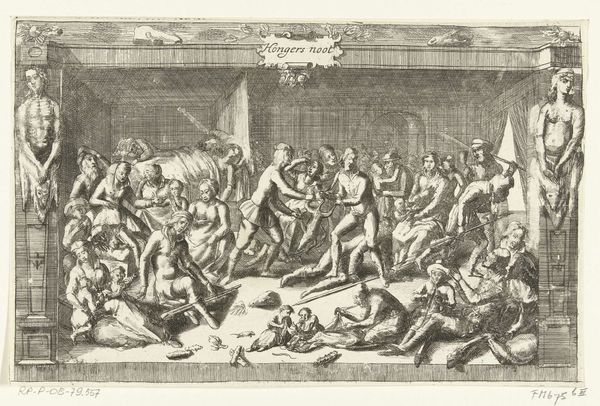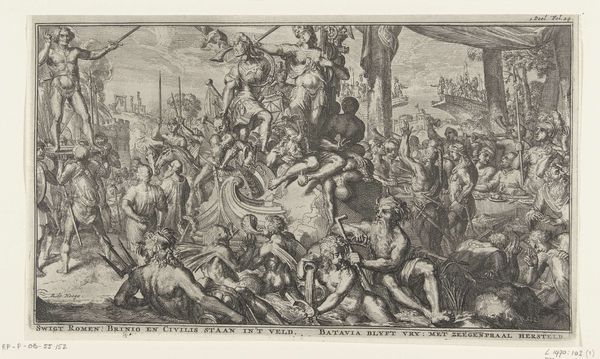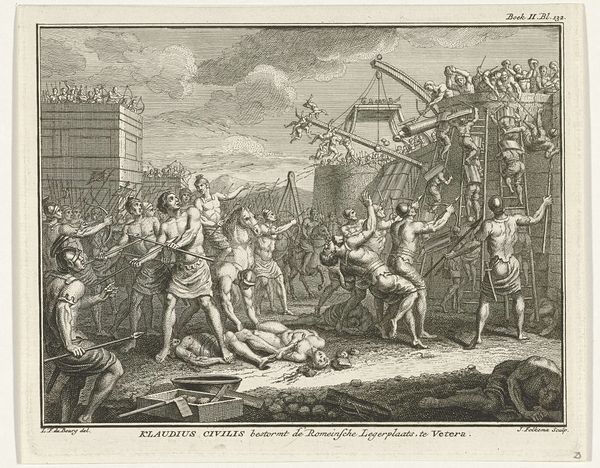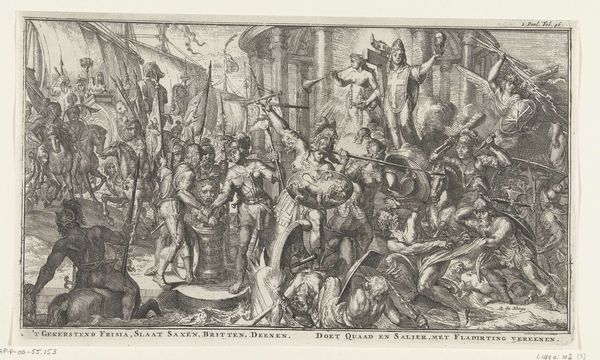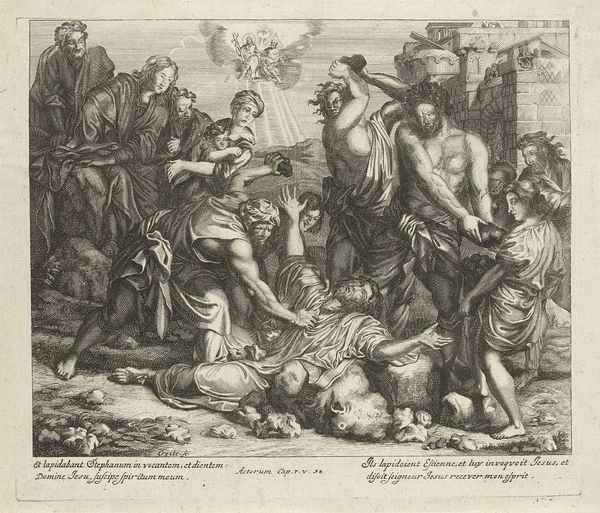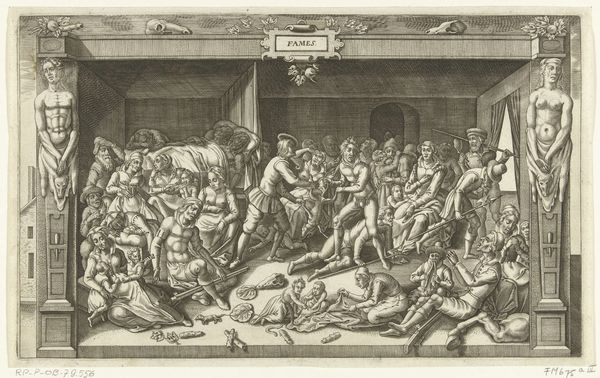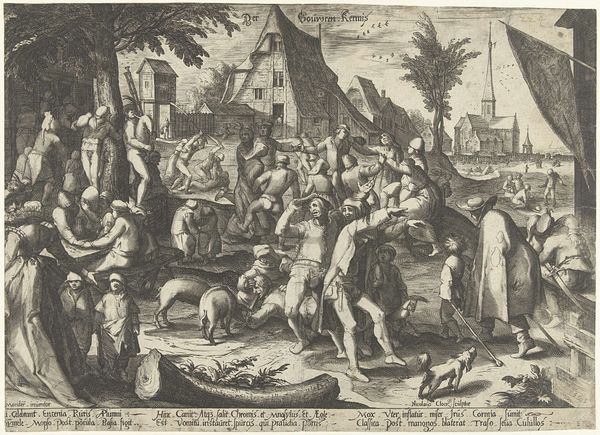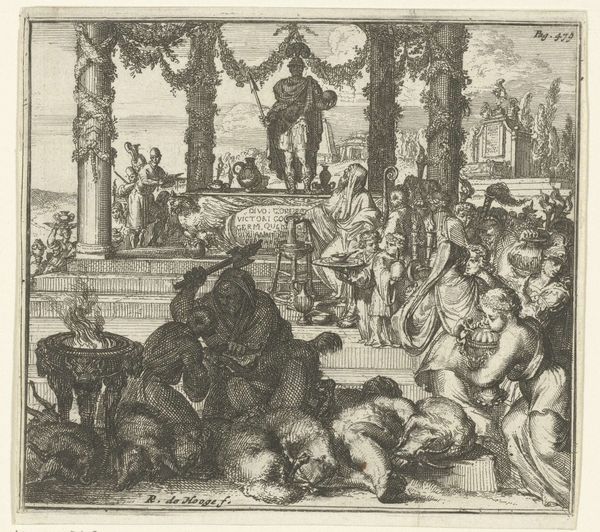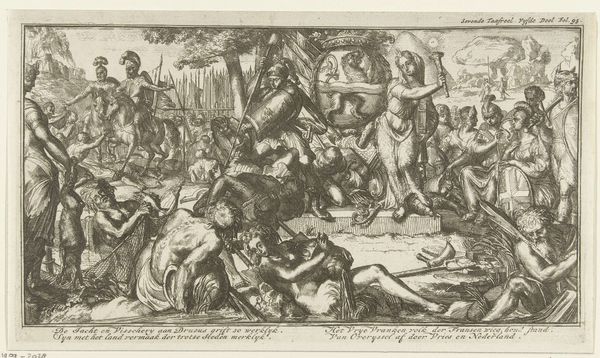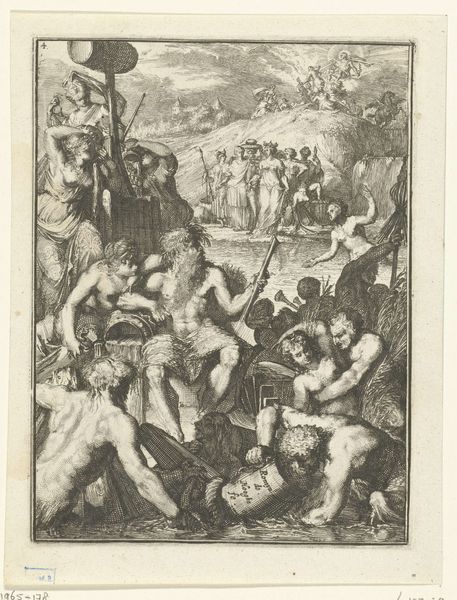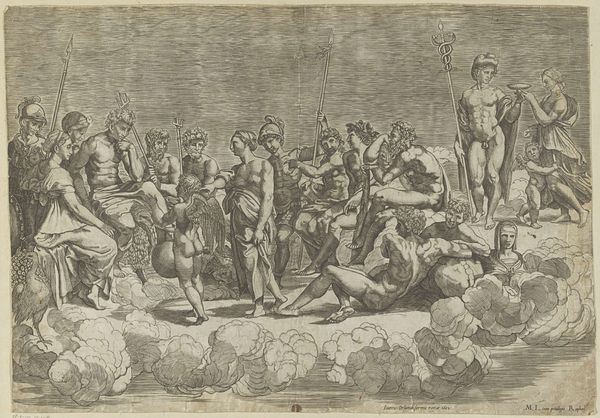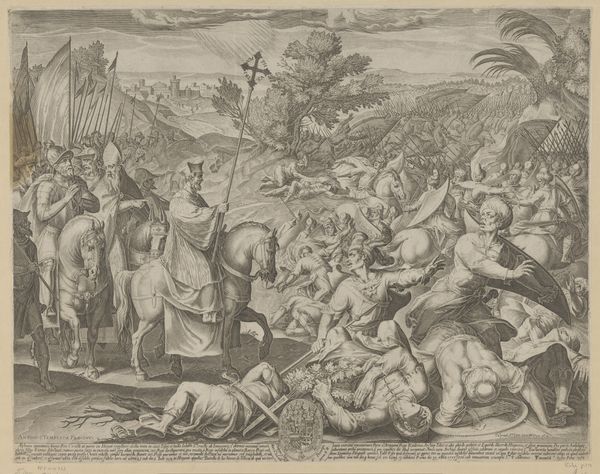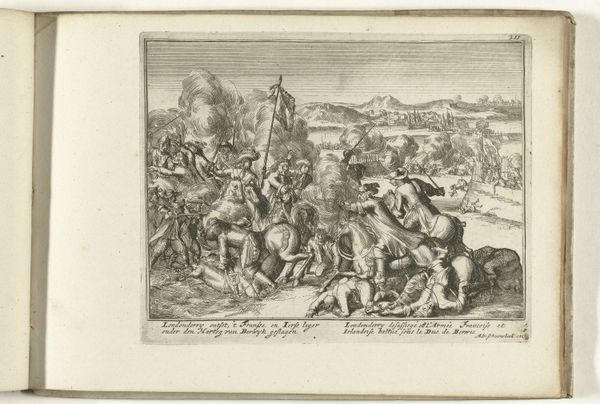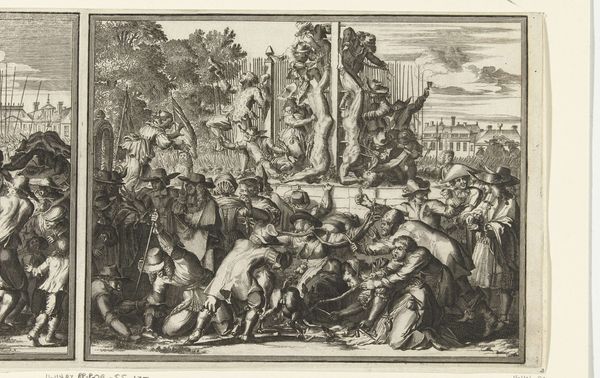
engraving
#
narrative-art
#
baroque
#
pen drawing
#
old engraving style
#
figuration
#
line
#
history-painting
#
engraving
#
realism
Dimensions: height 154 mm, width 196 mm
Copyright: Rijks Museum: Open Domain
Editor: This engraving, titled "Lynchpartij van Johan en Cornelis de Witt, 1672," is attributed to an anonymous artist and depicts a gruesome scene. The chaotic composition, rendered in fine lines, leaves a chilling impression. What can you tell me about the story behind it? Curator: The power of this work, even in its graphic depiction, rests in its demonstration of materiality reflecting social tensions. Consider the medium: an engraving. This isn't some oil painting commissioned by the elite, but a reproducible print, making it accessible. Think about the labor involved in creating these kinds of images. What message do you think that accessibility sent during a time of intense political upheaval? Editor: I see what you mean. The artist's choice of printmaking allowed the image to be widely circulated, potentially inciting further violence or solidifying public opinion against the De Witts. Curator: Exactly. The act of physically reproducing and disseminating this image becomes an act of material culture, influencing the real world, manipulating sentiments toward those in power, by the common people. It removes it from a high art context into something else entirely. Consider the relationship between labor, production and message; the print becomes a weapon itself. Editor: So it is both about the scene and the social function of producing an image about it in that medium at that time. Curator: Precisely. It pushes beyond a simple record into something that shapes our perception. What began as an emotional reaction is now clearly about class, labour, and social realities. Editor: I never considered the materiality and reproducibility influencing its significance so profoundly! Thanks, I see how much richer and disturbing it gets now!
Comments
No comments
Be the first to comment and join the conversation on the ultimate creative platform.
